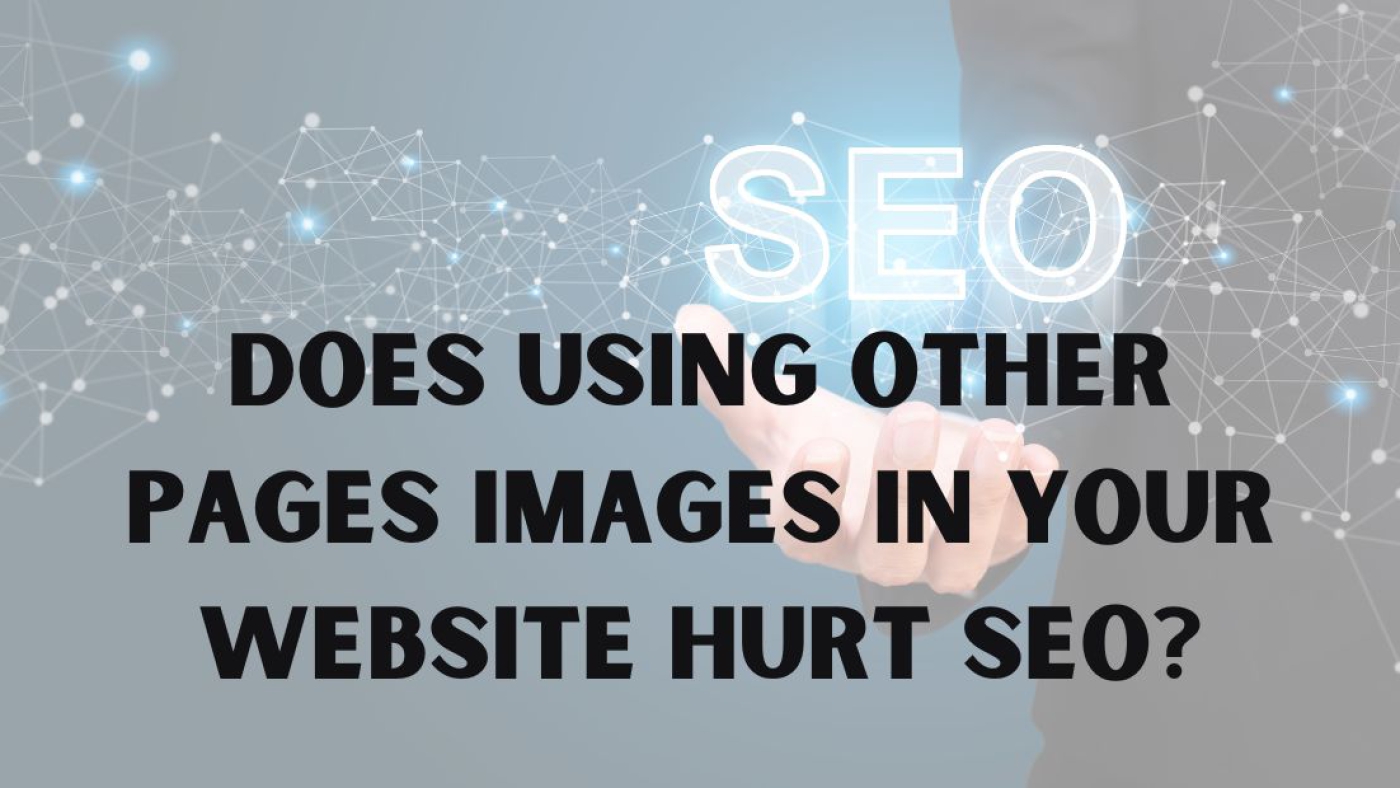When creating a website, optimizing images is crucial for better search engine rankings and user experience. A common question arises: Does using other pages images in your website hurt SEO? The answer depends on various factors, including copyright issues, image attribution, and technical SEO practices. Let’s delve into the topic and explore how using other websites’ images can impact SEO and what you can do to avoid potential pitfalls.
1. Copyright and Legal Implications
Using images from other websites without permission can lead to copyright issues. Copyright laws protect the creators’ rights, and unauthorized use of images can result in legal actions or penalties. If the owner reports the copyright violation, it could also lead to a penalty from search engines. Google, for example, may take down a web page if it receives a valid Digital Millennium Copyright Act (DMCA) notice. Therefore, it’s essential to ensure you have the right to use any image before uploading it to your site.
2. Image Attribution and Licensing
Even if an image is available on another website, that doesn’t necessarily mean it’s free to use. Some images are licensed under Creative Commons or other agreements that allow you to use them as long as you provide proper attribution or follow specific terms. If you decide to use an image from another source, make sure it’s correctly attributed according to the license requirements. Always check the licensing terms to understand what is allowed and what isn’t. Using images with proper licensing or from free stock photo sites ensures you avoid copyright issues and the negative SEO impacts associated with them.
3. Duplicate Content Issues
While duplicate content is a well-known SEO issue for text, many wonder if it applies to images as well. Technically, using an image already indexed by search engines on another site doesn’t result in a duplicate content penalty in the same way text duplication might. However, using widely available images may still be detrimental because search engines may favor original content, including images. To stand out, aim to create unique and original visuals that add value to your content and set you apart from competitors.
4. Image Optimization and SEO Impact
Images play a significant role in SEO through factors like file size, alt text, and file name. If you decide to use an image from another website, make sure to:
– Compress the image: Larger images can slow down your website’s loading speed, which negatively impacts SEO. Use image compression tools to reduce file size without sacrificing quality.
– Change the file name: Rename the image file to include relevant keywords, which can improve your image’s chances of ranking in search results.
– Write descriptive alt text: Alt text helps search engines understand what the image is about, enhancing your site’s SEO. It also makes your site more accessible for visually impaired users.
5. Hotlinking Risks
Hotlinking occurs when you use the URL of an image hosted on another website instead of uploading the image to your own server. This practice is not advisable because it consumes the original site’s bandwidth. If the website owner notices, they may replace the image with something else or block the hotlink, resulting in a broken image on your site. This can negatively affect user experience and SEO. Always download and host images on your own server to avoid these risks.
6. The Impact of User Experience (UX) on SEO
User experience is a significant SEO ranking factor, and the images you use contribute to it. Images should be relevant, high-quality, and contribute to the content’s value. Using unrelated or generic images can harm user engagement metrics like time on page, bounce rate, and conversion rates. When users quickly leave a page because it lacks valuable visual content, search engines may interpret it as a sign of poor quality, potentially impacting rankings. Choose images that enhance your content and provide a meaningful context for users.
7. Leveraging Stock Images
Stock images are widely used by websites because they are legally safe and easy to find. However, if you rely heavily on common stock images, your content may appear generic, which can affect your brand’s authenticity and engagement. While stock photos won’t directly hurt SEO, using unique visuals can improve the chances of your content standing out. When possible, invest in custom graphics, infographics, or professional photography to make your content more appealing.
8. Using Image Sitemaps for Better SEO
An image sitemap helps search engines index your images, improving the chances of appearing in image search results. If you’re using images from other sources, ensure they are included in your sitemap, along with relevant metadata such as the title, caption, and license information. This approach can enhance your site’s SEO without relying on entirely original images, provided you’ve addressed copyright and attribution issues.
9. Google’s Perspective on Image Usage
Google emphasizes the importance of providing unique and valuable content. While they do not explicitly penalize the use of non-original images, they do encourage creating content that adds value. Images are a part of that content. When using images from other sources, make sure they complement the written content, offer insights, or help explain a concept, rather than just filling space.
10. Strategies for Using Other Websites’ Images without Hurting SEO
To use images from other pages while minimizing SEO risks, follow these best practices:
– Check the copyright and license of the image: Make sure you have permission to use the image, and follow the requirements for attribution if necessary.
– Avoid hotlinking: Always host the images on your server to prevent bandwidth theft and broken images.
– Optimize the image for SEO: Use relevant keywords in the file name, add descriptive alt text, and ensure the file size is optimized for fast loading times.
– Use images that add value: Make sure the image is relevant to the content and enhances the user experience.
– Consider using image editing tools: Slightly modifying or enhancing the image can help it look more unique and fit your content’s context better.
Conclusion
Using other websites’ images on your own site does not directly harm SEO if done correctly, but it does come with risks and limitations. Copyright infringement, lack of image optimization, and poor user experience can all negatively impact your site’s performance. To avoid these pitfalls, ensure you have permission to use the images, optimize them for SEO, and select visuals that enhance the overall content quality. By following these best practices, you can leverage images effectively without hurting your SEO efforts.


Add a Comment